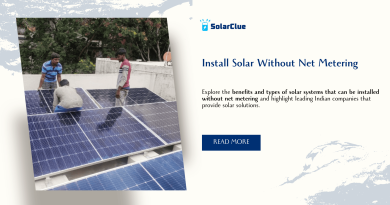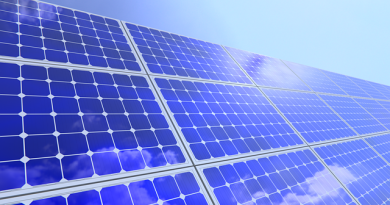how long can solar panels last
Solar panels are a significant investment, and understanding their lifespan is crucial for anyone considering solar energy. The lifespan of a solar panel is influenced by various factors, including the quality of the panel, installation practices, maintenance routines, and environmental conditions. This guide will explore these factors, explain the concept of solar panel degradation, and provide insights into warranties, insurance coverage, and future technological advancements.
Table of Contents
- 1 The Lifespan of Monocrystalline Solar Panels
- 2 Factors Affecting Solar Panel Durability
- 3 Environmental Factors and Their Impact
- 4 Proper Installation and Maintenance for Longer Lifespan
- 5 Solar Panel Degradation and Its Effects
- 6 Warranties and Insurance Coverage
- 7 The Future of Solar Panel Technology and Its Impact on Lifespan
- 8 Comparing the Lifespan of Monocrystalline and Other Solar Panel Types
- 9 The Role of Solar Panel Maintenance in Extending Lifespan
- 10 Case Studies of Long-Lasting Solar Panel Installations
- 11 Table: Comparing the Lifespan and Degradation of Different Solar Panel Types
- 12 FAQ Section
- 13 Conclusion
The Lifespan of Monocrystalline Solar Panels
Monocrystalline Solar Panels:
- Typical Lifespan: Monocrystalline solar panels, known for their high efficiency and durability, typically have a lifespan of 25 to 30 years. Some panels may continue to generate electricity beyond this period, albeit with reduced efficiency.
- Longevity Factors: These panels are made from a single, pure crystal structure, which contributes to their longer lifespan compared to other types of solar panels.
Factors Affecting Solar Panel Durability
Panel Quality:
- Material Composition: High-quality materials, such as tempered glass and durable frames, contribute to the longevity of solar panels. The quality of the semiconductor material (silicon) also plays a critical role.
- Manufacturing Standards: Panels manufactured by reputable companies with strict quality control measures tend to last longer.
Installation Practices:
- Professional Installation: Proper installation ensures that panels are securely mounted and positioned to minimize stress from wind and other environmental factors.
- System Design: The design of the solar panel system, including the angle and orientation of the panels, can impact their exposure to sunlight and environmental elements, affecting their durability.
Environmental Factors and Their Impact
Climate Conditions:
- UV Exposure: Prolonged exposure to intense sunlight can lead to faster degradation of the panel materials.
- Temperature Fluctuations: Extreme temperature changes can cause thermal cycling, which may lead to micro-cracks in the panels over time.
- Moisture and Humidity: High humidity levels can lead to corrosion of the electrical components if the panels are not properly sealed.
- Snow and Ice: Heavy snow loads can cause physical stress on the panels, and ice formation can lead to potential damage if not cleared properly.
Pollution and Dirt:
- Soiling: Accumulation of dirt, dust, and bird droppings can block sunlight and reduce panel efficiency. Regular cleaning is essential to maintaining optimal performance.
- Chemical Exposure: Panels installed in industrial areas may be exposed to chemical pollutants that can degrade the materials faster.
Proper Installation and Maintenance for Longer Lifespan
Installation Best Practices:
- Secure Mounting: Ensure that panels are securely mounted to withstand wind, snow, and other environmental stresses.
- Optimal Angle and Orientation: Position panels to maximize sunlight exposure and minimize shading, which can affect both performance and longevity.
Maintenance Tips:
- Regular Cleaning: Clean panels regularly to remove dirt and debris that can obstruct sunlight and reduce efficiency.
- Periodic Inspections: Conduct regular inspections to check for any signs of damage, such as cracks or corrosion.
- Professional Maintenance: Schedule professional maintenance at least once a year to ensure the system is operating efficiently and to address any potential issues early.
Solar Panel Degradation and Its Effects
What is Solar Panel Degradation?:
- Definition: Degradation refers to the gradual loss of solar panel efficiency over time. All solar panels degrade, but the rate of degradation varies depending on factors like panel quality and environmental conditions.
- Degradation Rate: The typical degradation rate for solar panels is around 0.5% to 1% per year. This means that after 20 years, a panel may still produce 80-90% of its original capacity.
Impact on Performance:
- Long-Term Output: As panels degrade, they produce less electricity. However, even after 25 years, most high-quality panels still generate a significant portion of their original output.
- Economic Considerations: While degradation reduces output, the financial benefits of solar panels typically outweigh this reduction, especially when considering long-term energy savings.
Warranties and Insurance Coverage
Warranties:
- Product Warranty: Covers defects in materials and workmanship, typically lasting 10-25 years depending on the manufacturer.
- Performance Warranty: Guarantees that the panel will maintain a certain percentage of its original output over a specified period, often 80-90% after 25 years.
Insurance:
- Homeowners Insurance: Solar panels are often covered under standard homeowners insurance policies, but it’s important to check specific coverage details.
- Dedicated Solar Insurance: Some providers offer specific solar panel insurance that covers damage, theft, and loss of output due to degradation.
The Future of Solar Panel Technology and Its Impact on Lifespan
Advancements in Materials:
- Perovskite Solar Cells: Emerging technologies like perovskite solar cells show promise for higher efficiency and potentially longer lifespans.
- Bifacial Solar Panels: Panels that capture sunlight on both sides, increasing overall efficiency and potentially reducing degradation rates.
Improved Manufacturing Processes:
- Enhanced Durability: Ongoing research into materials and manufacturing techniques is leading to more durable panels with slower degradation rates.
- Longer Warranties: As technology improves, manufacturers may offer longer warranties, reflecting increased confidence in the longevity of their products.
Comparing the Lifespan of Monocrystalline and Other Solar Panel Types
Polycrystalline Solar Panels:
- Lifespan: Similar to monocrystalline panels, with a typical lifespan of 25-30 years.
- Degradation: Slightly higher degradation rates compared to monocrystalline, but still within a manageable range.
Thin-Film Solar Panels:
- Lifespan: Generally shorter, around 10-20 years, due to the materials used.
- Degradation: Higher degradation rates, leading to faster declines in efficiency over time.
The Role of Solar Panel Maintenance in Extending Lifespan
Regular Monitoring:
- Performance Tracking: Use monitoring systems to keep track of your panels’ performance and detect any drops in efficiency early.
- Preventative Actions: Addressing minor issues like dirt accumulation or loose connections promptly can prevent more significant problems down the line.
Scheduled Professional Inspections:
- Annual Checks: Having a professional inspect your solar system annually ensures that any potential issues are identified and addressed before they can affect performance.
Case Studies of Long-Lasting Solar Panel Installations
Case Study 1: Residential Installation in Arizona:
- System Size: 6 kW
- Lifespan: Panels have been operational for over 30 years with minimal degradation (around 0.5% per year).
- Maintenance: Regular cleaning and inspections have contributed to the system’s longevity and sustained performance.
Case Study 2: Commercial Installation in Germany:
- System Size: 100 kW
- Lifespan: Installed in the early 1990s, the panels are still functioning efficiently, with a degradation rate of approximately 0.6% per year.
- Environmental Conditions: The system has withstood harsh winters, with proper maintenance ensuring continued operation.
Table: Comparing the Lifespan and Degradation of Different Solar Panel Types
| Solar Panel Type | Typical Lifespan | Annual Degradation Rate | Efficiency After 25 Years |
|---|---|---|---|
| Monocrystalline | 25-30 years | 0.5% – 0.8% | 80% – 90% |
| Polycrystalline | 25-30 years | 0.8% – 1% | 75% – 85% |
| Thin-Film | 10-20 years | 1% – 2% | 70% – 80% |
FAQ Section
- What is the typical lifespan of a solar panel?
- Most solar panels, especially monocrystalline types, have a typical lifespan of 25 to 30 years. Some can last even longer with proper maintenance.
- What factors affect the lifespan of a solar panel?
- Factors include the quality of the panel, environmental conditions (such as temperature, UV exposure, and humidity), installation practices, and regular maintenance.
- What is solar panel degradation?
- Solar panel degradation is the gradual reduction in the panel’s efficiency over time. Most panels degrade at a rate of 0.5% to 1% per year.
- Are solar panels covered by warranties?
- Yes, solar panels typically come with a product warranty (covering defects) and a performance warranty (guaranteeing a certain efficiency level over time).
- How can I extend the lifespan of my solar panels?
- Proper installation, regular cleaning, annual inspections, and prompt attention to any issues can help extend the lifespan of your solar panels.
Conclusion
Understanding the lifespan of solar panels is key to maximizing your investment in solar energy. With a typical lifespan of 25 to 30 years, solar panels can provide decades of clean energy, especially when proper installation, maintenance, and environmental considerations are taken into account. As technology continues to advance, future solar panels may offer even longer lifespans and lower degradation rates, making solar energy an increasingly attractive and sustainable option.


